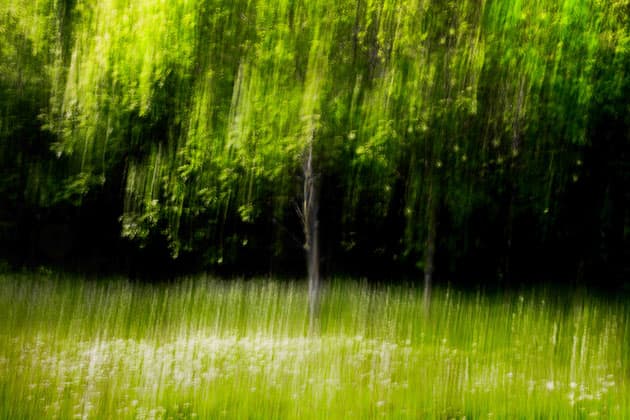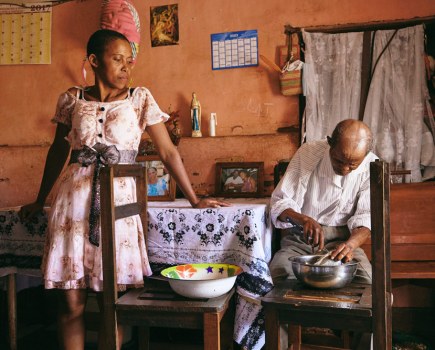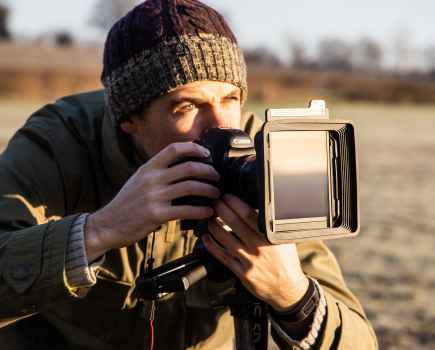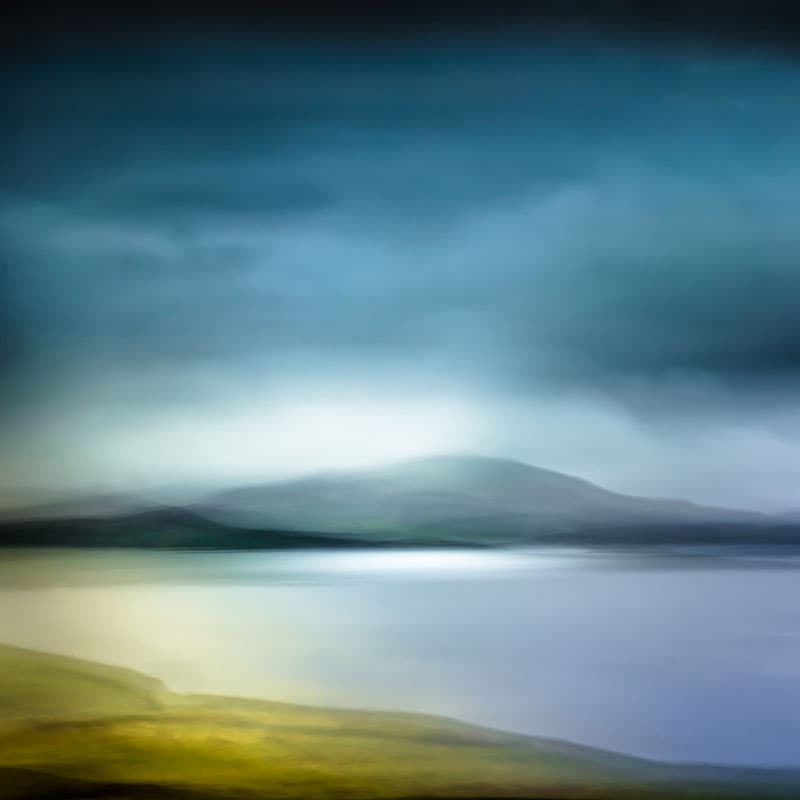
The dark conditions were ideal for creating this dreamlike landscape on a rain-filled day. Canon EOS 5D Mark II, 24-105mm, 2.5sec at f/11, ISO 100. Credit: Lynne Douglas
Some years ago while reviewing images from a trip to the Hebrides, one image stood out from the rest – it was beautifully blurred because I had accidentally moved the camera while taking the shot. I had such an emotional response to this impressionist-style image that I began to explore ways to recreate the effect. At that time, the photography world seemed to be obsessed with hyperfocal distance and front-to-back sharpness; my attraction to camera movement seemed off-key. Ten years on, my happy accidents are now making me a living.
There are many ways to create painterly compositions, but there are always two basic factors that need to balance: shutter speed and movement. While the results of random movements are often interesting, developing a work ow will improve your success rate. Slow down and experiment with movement and shutter-speed combinations to fine-tune your technique. Having said that, this is a game of experimentation and there is no right or wrong way. So let your heart rule your head, shake off any preconceived ideas and let your creative juices flow.
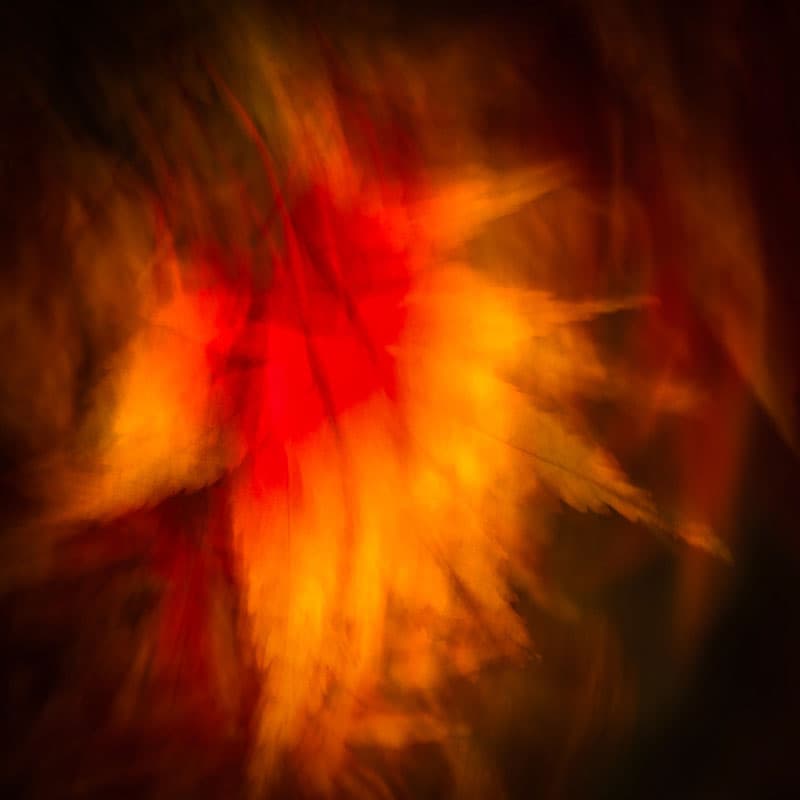
Leaves were used to create an autumnal abstract. Canon EOS 5D Mark II, 24-105mm, 0.5sec at f/8, ISO 100. Credit: Lynne Douglas
Technique and kit
Over the years I have developed some routine starting points for my speed, direction of movement and shutter speed depending on the subject I am shooting. As the main aim is to work with slow exposure and movement, there is no real need to worry about the aperture or the type of lens other than using those to your advantage in slowing the speed. A narrow aperture and longer lens can add a couple of stops and lengthen the time you have to make the shot. In my kit I always carry a large set of Lee Filters and rarely make a shot without my 0.9 neutral density (ND) filter. If shooting in daylight, I often combine graduated and ND filters as well as using my lowest aperture to maximise the shutter speed. Dark gloomy days are perfect for slowing down, and rain or mist can add to the effect.
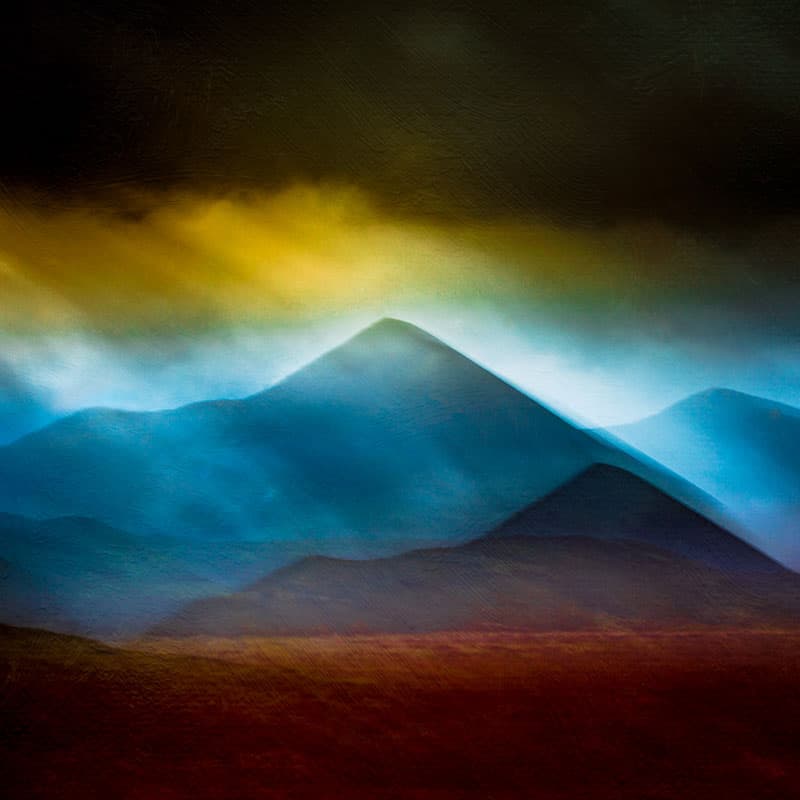
A storm has created some repetition and colour harmonies in this Cuillin mountain scene. Canon EOS 5D Mark II, 24-105mm, 1sec at f/22, ISO 100. Credit: Lynne Douglas
Choice of subject
There are so many options here that it really depends on personal interest to decide what to shoot. Personally, I enjoy working with mountains and beaches but forests and rivers have also been fruitful, as have studio shots of leaves and flowers. Mountains with strong graphic shapes can be used to create gentle, subtle movements, resulting in soft, flowing images. Whereas a two-step movement from one focal point to another will give repeats, by focusing most of the exposure time on the main composition before moving the camera to a second position you can reinforce the graphic elements.
Seascapes can be made dramatically minimal by panning across the scene in a straight line using the tripod or a monopod to keep the camera steady. For this type of shot it is important to review the test shot before you start, and ensure the horizon is straight and in the right position. These minimal seascapes work well with my EF 70- 200mm lens with a narrow aperture setting of f/32. The results are often simple exquisite lines and strips of colour. Freehand shots of distinct waves while moving the camera result in repeated misty waves that appear to drag colours across the image like a watercolour painting.
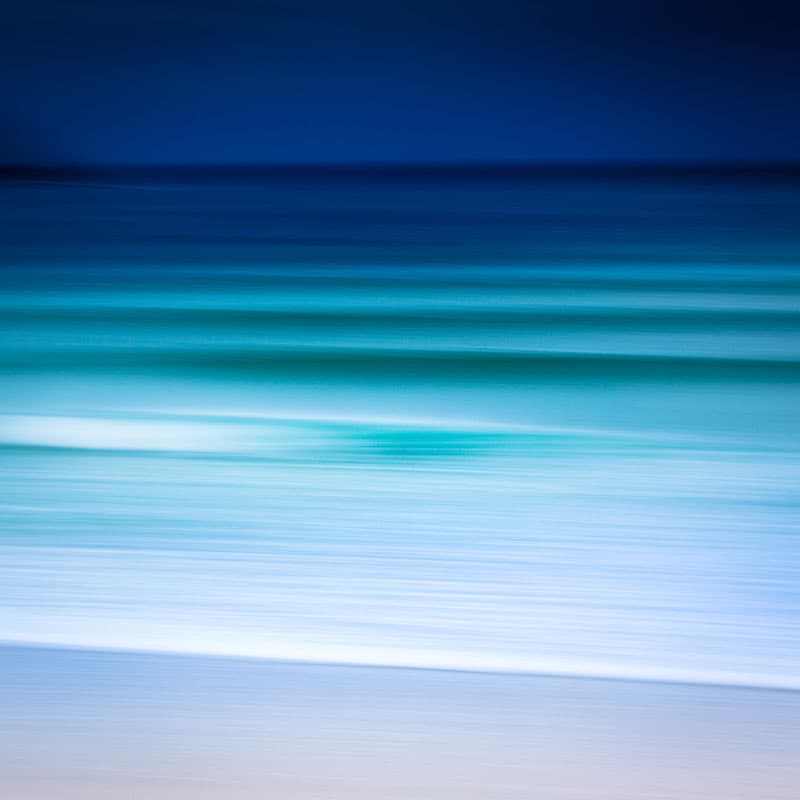
A minimalist seascape is ideal for panning horizontally to capture simple strips of colour. Canon EOS 5D Mark II, 24-105mm, 0.4sec at f/32, IS0 100. Credit: Lynne Douglas
Exposure time
There are no rules for the length of an exposure or the degree of movement you should use, and what works for one subject may not work for another. Working in a forest using autumn leaves as my subject, an exposure of 0.5-1 second with a strong downward curving movement in line with the direction the leaves were moving resulted in pleasing effects. Sideways movements and short speeds with too little movement tended to look uninteresting and unintentionally blurry. Watch out for the light at the top of trees too. Downward movements will drag the white light from the sky through your darker colours, which is not always pleasing.
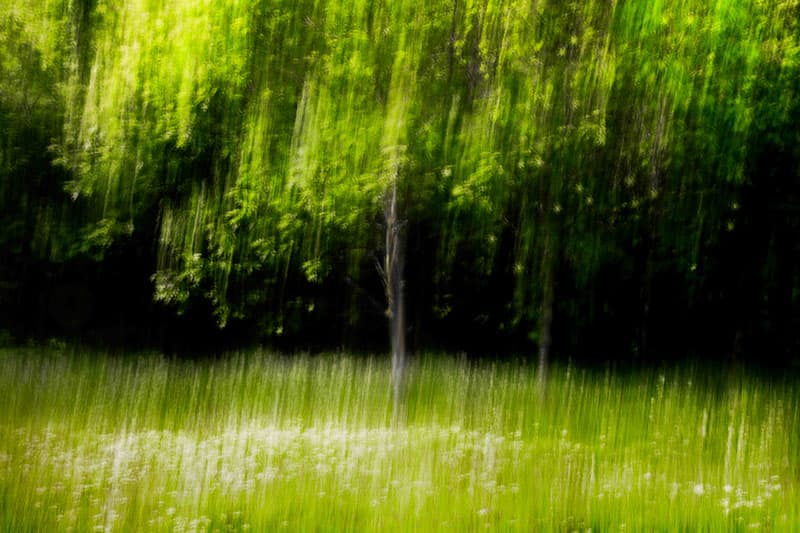
Dragging the camera vertically with trees will result in an interesting spread of light, colour and tones. Canon EOS 5D Mark II, 24-105mm, 2sec at f/10, ISO 100. Credit: Lynne Douglas
General principles and post-processing
Just because the basic rules of photography in terms of speed and sharpness are put to one side, the general principles of creating balance in an image still apply. The Rule of Thirds and leading the eye in and out of the picture are still important for the image to work. I work primarily in Lightroom and I start my selection by looking at a panel of small previews and selecting thumbnails that stand out. Working with small rather than large previews restricts me to colour and lines and shapes without worrying about distracting details. Once I have narrowed down my selection, I start working with the temperature sliders and contrast controls, often pushing them to the extreme before I settle on the optimal settings. Sometimes I switch to Photoshop to add some textural layers if I feel they will enhance the image.
Timing and movement
Get into the habit of taking a few test shots to experiment with timing and movement. Each location and subject will vary – there is no formula with this sort of technique. For example, at this location I took three test shots with identical camera settings – 0.8sec at f/25 with an EF 70-200mm lens – but with differing degrees of movement.
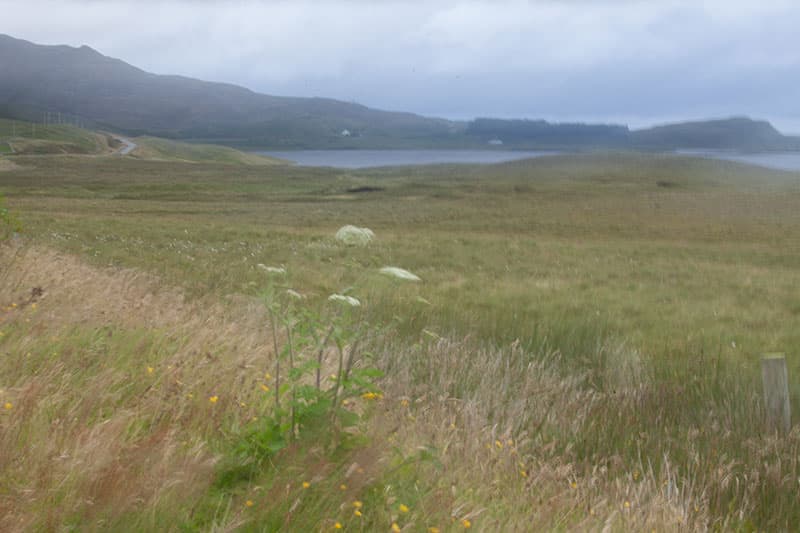
Credit: Lynne Douglas
Test shot 1
This is too static, and the image just looks unintentionally blurred.
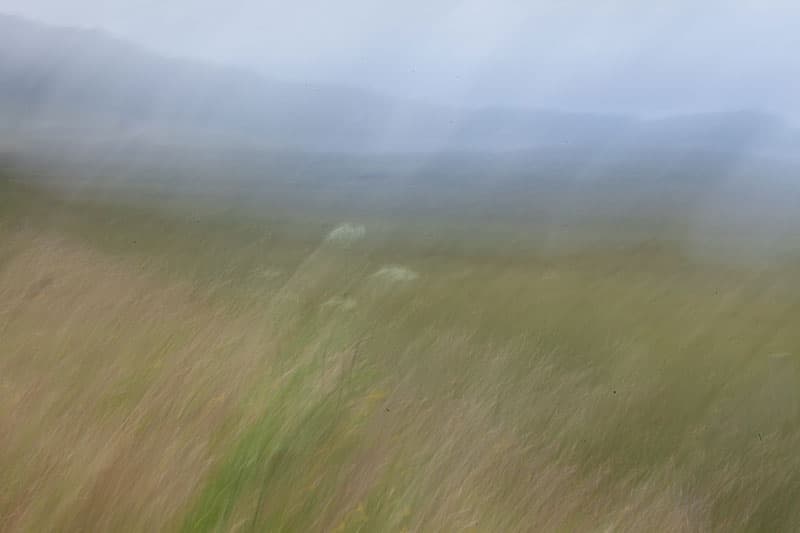
Credit: Lynne Douglas
Test shot 2
This has too much movement and any object definition is lost altogether.
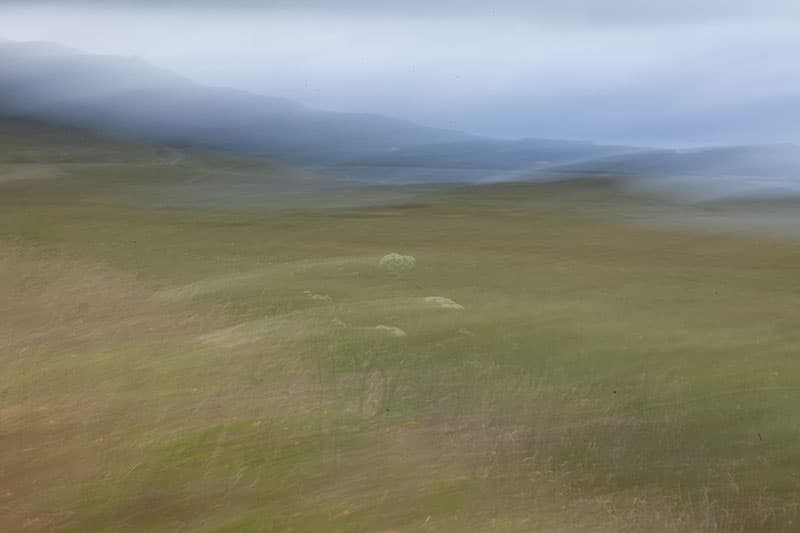
Credit: Lynne Douglas
Test shot 3
Not too fast, not too slow, and like Goldilocks’s porridge you will get it just right.
Lynne’s top ten subjects for abstract scenes
Nature provides a wide array of subjects that lend themselves to this technique
- Beaches Waves, whether shot freehand or panned with a camera, are particularly well suited to this type of work regardless of the weather.
- Mountains Dragging the camera upwards over graphic shapes often produces interesting results, although sideways movements also work.
- Reflections Using the water as the moving target can produce fabulous images. Canals and boats are a good subject, as are trees above the water.
- Landscapes If a more recognisable landscape is the target, then you’ll find that short bursts of 0.4-1sec exposures with small dragging movements work well.
- Flowers Abstractions from flowers can be very interesting at extreme close up. Try using the camera on a tripod and use a macro lens or just a zoom.
- Leaves The forest floor is a great place to start with some easy captures. Try using one main leaf as your ‘focal’ point with movement in different directions and speeds.
- Trees Contrasting light-barked trees against a dark forest background with upwards movements works particularly well.
- Indoor fun Try submerged leaves, freezing some interesting objects or shooting through rainy windows to create interesting effects.
- Lights Car tail lights, street lamps and window lights make fabulous light trails; experiment with different movements and speeds.
- People Get out on busy streets for some unusual captures or try some portraits with camera movement; black & white works particularly well for these subjects.
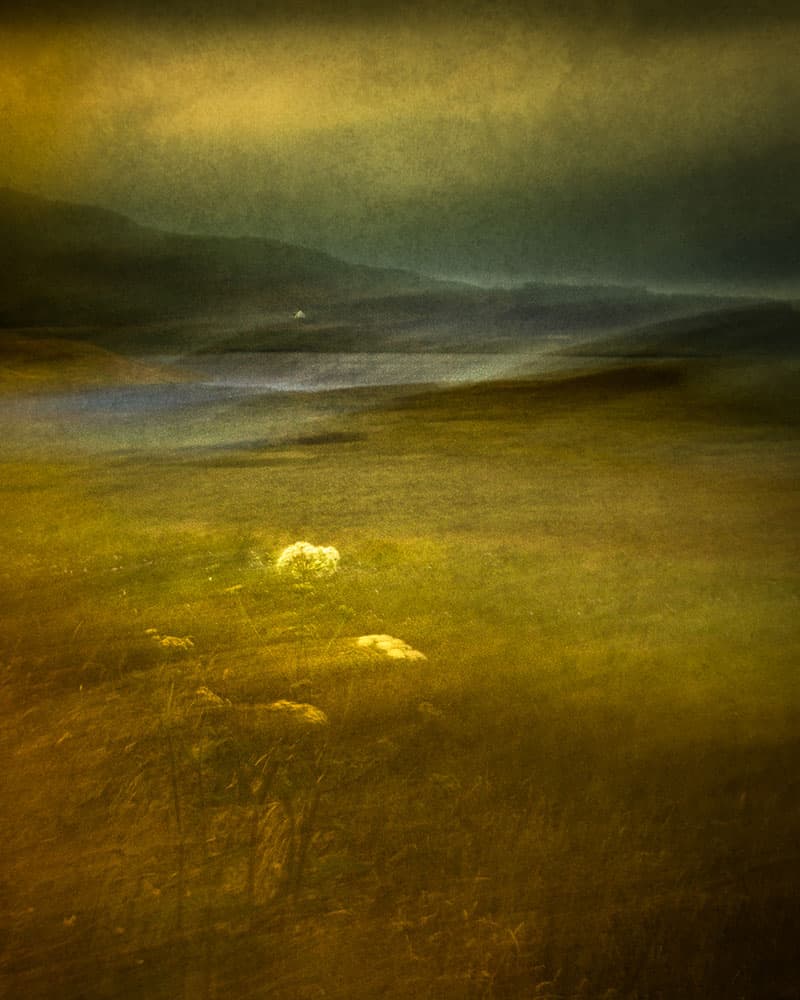
This image gives a sense of the moving flowers and grass. Canon EOS 5D Mark II, 24-105mm, 0.8sec at f/25, ISO 100. Credit: Lynne Douglas
Why it works
With this picture, my aim was to convey the sense of movement of the wildflowers and grasses and combine it with the remoteness of the cottage on the hill. I wanted to retain the shapes of the cottage, the loch and hills while giving the illusion of a flowing, rolling-hill sensation to highlight the sense of isolation. The camera movement has enhanced the mountain shapes by reiterating them.
Kit list
- Lens selection Generally speaking, a longer lens will give you more options with the shutter speed, but a wideangle lens works just as well. A long focal length works best when the camera is used handheld, but the wideangle does a better job if using a tripod.
- Filters When blurring and movement are essential, you need to cut the light and lengthen the shutter speed. I use neutral density filters alone or in combination with graduated filters in most of my work.
- Tripod If you fancy trying some of the more minimal abstract shots with simple lines or panels of colour, then using a tripod or monopod to pan will help keep the horizon line straight and level.
- Waterproofs Some of the best outdoor abstracts are made in the rain so waterproof gear is essential. A good pair of gaiters over boots or wellies is also a must.

